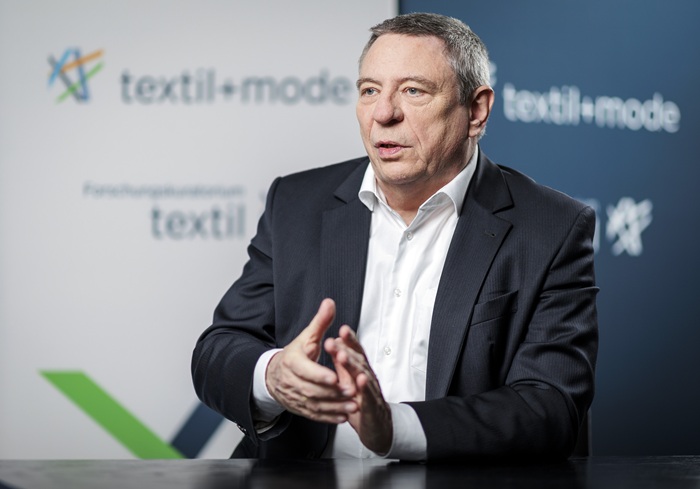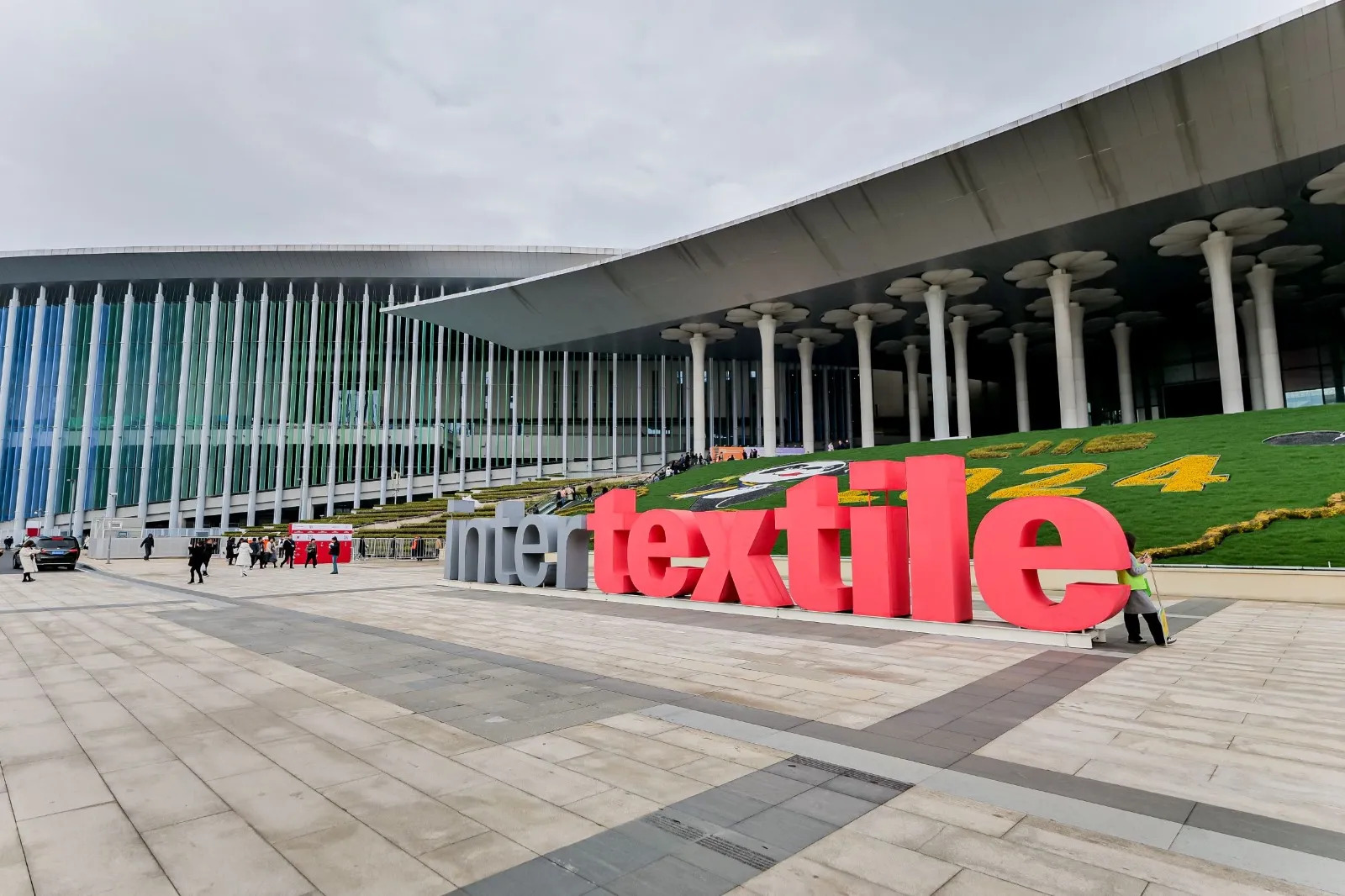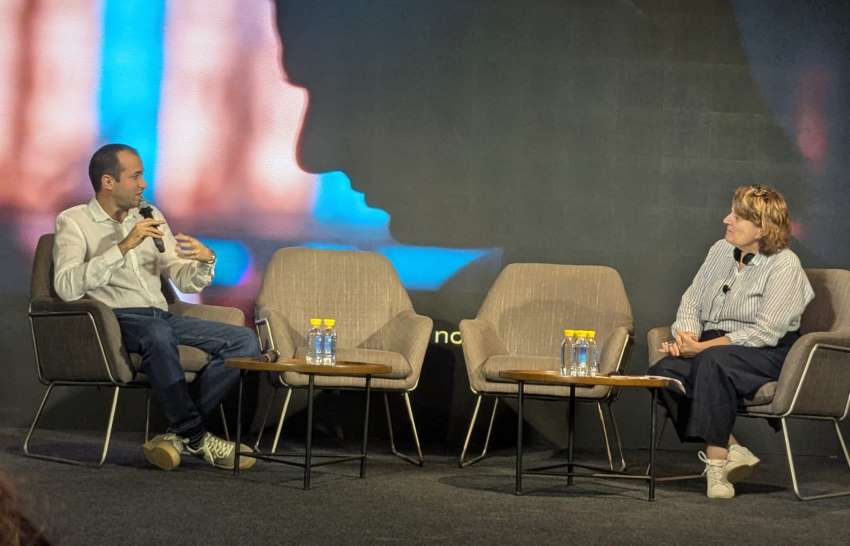FW
Cotton production in Kenya currently stands at 4,000 metric tons of lint while the spinning capacity demand is about 10,000 metric tons of lint. Currently, the country imports more than 50 per cent of its lint requirements from the neighboring countries, putting pressure on the demand for foreign exchange.
Initiatives have been put in place to enable smallholder farmers venture into the farming of cotton and help revive the troubled sector.
Cotton is a crop that is mainly grown in western, coastal and central Kenya.
Key stakeholders such as farmers, input suppliers, market agents, ginners, spinners and textile millers have been involved in promoting not only production but the value and consumption of cotton.
Various resources are being mobilised to ensure that opportunities in the cotton textile value chains are enhanced. To achieve the goal, farmers are given easy credit, being trained, provided farming inputs such as equipment, seeds and chemicals.
Currently the country produces an average of 25,000 bales against a demand of 2,00,000 bales, with the deficit covered through imports from neighboring countries of Uganda and Tanzania and from the Far East.
Cotton production has remained below the national demand due to unstable international prices and high cost of production.
Inspiron is an Indian manufacturer of hot air stenters.
The Motex 15000 is an improvement on the Motex 4560. The new model consumes less energy, has better safety features, minimises waste, while offering better operational efficiency and maximum return on investment.
As against the Motex 4560, the 15000 offers 15 per cent higher drying efficiency and higher operating speed. The stenter enables the processor to achieve even drying and heat setting at higher evaporation rates with optimum energy utilisation, which translates into lower operating cost per meter of fabric.
InspirOn has also recently unveiled a R&D center, which will undertake sustainable development projects to produce products of the best quality using innovative and user friendly technology.
Attached to the R&D center is an incubation center, which is equipped with a demo stenter for mills to undertake trials and test their ideas, while also validating them under actual working conditions, before venturing into commercial production.
The incubation center is equipped with a laboratory, library and conference cum training room and is manned by a team of process technologists and design professionals.
Set up in 1973 InspirOn has strong roots in manufacturing of stenter machines and spinning accessories like flyers and precision engineering components.
Denim Premiere Vision Paris held on November 2 and 3, 2016 saw fewer visitors, 2300 visitors, whereas last year, the autumn session attracted over 3800 visitors. International visitors accounted for 74 per cent of the total last year.
This year the show had 80 exhibitors. It attracted 1,225 companies from a wide range of countries like France itself, which accounted for 22 per cent of visitors, Turkey, Italy, the UK, Spain, Germany, the Netherlands, the USA, Belgium and Tunisia. The event met the expectations of exhibitors and visitors. French ready-to-wear and luxury labels, such as Lagerfeld and Chloé, were notably present.
Each brand clearly showcased its spring/summer 2018 range. The season’s trends could be explored from the show's entrance, within a revised and more compressed area. The organizers used a much more selective approach to product presentation, adopting a more experiential style which was beneficial, and was remarked upon by buyers.
The section was boosted by the presence of the Premiere Vintage Market, organised with Denim Boulevard, which showcased items such as aviator leather jackets, denim shirts, military-style jackets and even kimonos.
Future editions will continue providing such industry insights. In 2017 the trade show will celebrate its tenth anniversary.
The European Union (EU) is planning to enter into a five-year strategic partnership with Pakistan as the current relationship between the two has reached a mature level.
The textile industry in Pakistan contributes 8.5 per cent to GDP and 60 per cent to exports while employing 38 per cent of the workforce. The EU has provided Pakistan GSP Plus.
Pakistan wants brand owners of textiles from the EU to divert the bulk of their buying from Pakistan since it is very well placed for the production and supply of high quality textile goods at attractive prices.
Fighting poverty and helping the country on its path towards inclusive and sustainable growth are the aims of EU support to Pakistan. The EU considers that such goals will only be achieved by increasing political stability, improving the rule of law, bringing about human and social development, creating productive and decent work opportunities and diversifying the economy.
Although the EU is regarded as a strong economic player it is still seen as a weak political power. The EU intends to change that view by using its position as a development and aid donor as its main strategy to foster democracy and strengthen Pakistan’s institution-building.
"The recent Yarn Expo in Shanghai offered three days of uninterrupted trendsetting sourcing platform for textile, yarns, and fibre companies across the globe. The yarn and fibre sector’s leading global event has been lauded as an effective sourcing platform. This year, the exhibition space expanded by 115 per cent, accommodating 494 exhibitors from 13 countries and regions. The three-day show from October 11 to 13, attracted 17,185 trade visitors from 83 countries and regions."

The recent Yarn Expo in Shanghai offered three days of uninterrupted trendsetting sourcing platform for textile, yarns, and fibre companies across the globe. The yarn and fibre sector’s leading global event has been lauded as an effective sourcing platform. This year, the exhibition space expanded by 115 per cent, accommodating 494 exhibitors from 13 countries and regions. The three-day show from October 11 to 13, attracted 17,185 trade visitors from 83 countries and regions. Speaking about the continuous success of the fair, Wendy Wen, Senior General Manager, Messe Frankfurt (HK), said, “We have been striving to make Yarn Expo the most comprehensive and effective global trade platform by bringing a wide range of quality suppliers together. As the market grows steadily every year, our show has now become the must-attend event for the industry.”
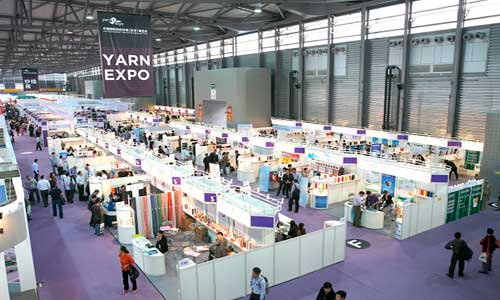
Both exhibitors and buyers agreed that Yarn Expo is the ideal platform for business, with most of them also showing optimism towards the market in the coming year. On the one hand, suppliers were happy to see that there is strong demand for their products at the show. Not only could they connect with existing customers, but new buyers as well. On the other hand, buyers were content about their sourcing journey considering the fair offered a wide range of products with high quality and competitive price.
Elated exhibitors
Neeraj Gupta, Representative, PT. Indo-Rama Synthetics Tbk, Indonesia said, “The first two days were busy for us as many visitors came to our booth. Some of them even placed orders onsite. This is one of the biggest yarn fairs in the world, so we expect to meet both Chinese and overseas customers here. The market in Asia and China is booming compared to other parts of the world, so there is big potential for our company to develop here.” Agreed Jong Soo Chang, Junior Manager, Posco Daewoo Corp., Korea who said, “We are cotton spinners with two mills in Uzbekistan. We have already met a number of our target buyers in the first day, so we have actually made some progress already. They are interested in cotton yarn from Uzbekistan as it is attractive in terms of price and quality. Yarn Expo is the only exhibition that we chose because it is one of the largest yarn shows in the world.” Similarly, Cuu Do Xuan, Marketing Director, Hanam Textile Company, Vietnam, remarked, “We have attended this exhibition for many years. We have already received 15 orders during the first day. The fair is very good for us as we can meet new customers every time.” Su Bo, Vice General Manager, Yiwu Huading Nylon Co, China, elaborated, “The market is showing positive feedback to us this year as we have met a lot of visitors and successfully received onsite orders. We rarely join other exhibitions except Yarn Expo. Here we can meet high-end domestic and overseas customers. Yarn Expo helps us to expand our sales channels and learn about current market demand. The show also connects the entire industry and facilitates our business.”
Ketan Shah, Marketing Head (Brands & Retail), Indo Liberty Textiles, Indonesia, informed, he had met a couple of potential customers who showed interest in their products. “Most of the buyers that came to us are new ones. They are professional with clear objectives in mind. This fair is an ideal platform for us to open up the Chinese market as we can meet many buyers from all over China.” Peter Dong, Marketing Director, Aditya Birla Group, China, managed to connect with target customers this edition, and some of them are even new to them. “A lot of fabrics and apparel companies visited our booth and wanted to know more about our fibres. Our products are eco-friendly and differentiated, so there is big potential for them in China,” he added.
Visitors feedback
Much like exhibitors, visitors too were also elated with the products and services on display. Ragheed Abbas, Sales Manager, TIBA. For Agencies (S.A.E.), Egypt, opined, “This is one of the most famous yarn exhibitions in Asia that I must attend. The Chinese suppliers here are really attractive to me as they suit my requirements. There is a wide range of options that are in good quality, reasonably priced and innovative. I have met some potential exhibitors that I am likely to place some orders with after the show.”
Similarly, Ricardo J Fischer, Textile Agent, Argentina, got the opportunity to meet some good suppliers from Indonesia, India and Vietnam. The show is comprehensive with different kinds of products including cotton yarns and specialty yarns available. Fischer came here to search for new suppliers for long term business, and it is definitely helpful. Andy Chu Sun Wah, Representative, World Knits Ltd, Mauritius, said, “Each time we come, we find around 10 new suppliers and eventually manage to have further cooperation with around four of them. I can tell you that this show helps us a lot. The manufacturers here are diverse and they show us great ideas on innovative production. The show always meets my expectations. We’ve also been to the trend area and it’s very fruitful. This is a five-star visit.”
Michelle Niu, Representative, Jining Boda Textile Co, China, explained the Yarn Expo has long been the most professional trade exhibition in China. It is the only occasion where you can find quality overseas yarn suppliers. For Leslie ZHANG, Representative, Kinger (Hong Kong) Ltd, Hong Kong, Yarn Expo is one of the biggest shows in the world. It is useful to source suitable raw materials and quality suppliers. With such pathbreaking performance, the next Spring Edition of Yarn Expo, promises to be grander and is slated to be held from March 14 – 16, 2018 at the National Exhibition and Convention Center (Shanghai).
Athletic-inspired clothing like hoodies, yoga pants, athleisure wear are made of synthetics than cotton. This is so inspite of the fact that people prefer cotton over synthetic fabrics.
Why, then, is polyester than cotton used? One reason is the price. Cotton is more expensive. Worldwide, China holds a dominant role in textile production. In that country, synthetic fibers cost only about half as much as cotton. That means those manmade materials are somewhat of a default; mills tend to use cotton mainly when requested.
Polyester is overwhelmingly the main choice in athletic clothing. Some shirts and pants also contain other sythentics such as spandex; only a few have any cotton.
That’s what the cotton industry is working to change. Putting cotton into fabrics isn’t an all-or-nothing scenario. Blends — 50 cotton and 50 poly labels, for example — are good, too.
Cotton is trying to compete with synthetics in other ways too. For example, synthetics are usually good at repelling moisture; traditional, untreated cotton tends to stay wet longer. So a big part of cotton’s branch into athletic clothing is exploring moisture-management techniques. Examples are technologies like Storm, Trans Dry and Wicking Windows. Garments made with these aim to keep moisture away from the body and on to the fabric, where it evaporates quickly.
China will not increase imports of raw cotton in the crop year 2016-17.
This will increase the share of cotton available in the open market for other importing countries like Bangladesh, Vietnam and Turkey.
Though the Chinese crop is expected to be only 21 million bales and is a historic low, it will be offset by the sale of reserve cotton from March 2017. Since the harvest easily exceeds this demand, it could be expected that supply-related price pressure will ease as more of the crop is harvested and made available to mills.
In the absence of enhanced Chinese imports, and in the wake of the current scenario where Australia has reached a bumper harvest of four million bales of cotton, the scenario would be ideal for countries importing raw cotton. It will also be a good time for importers to bargain hard over the pricing of the fiber.
However raw cotton imports by India and Pakistan are expected to drop in the wake of better crop yields this year. In Pakistan alone 1.3 million more bales of cotton are expected this year. India too is having a bumper crop with an increase of 1, 00,000 bales compared to the previous year.
The currency ban in India has created a cash shortage that is affecting the cotton trade. With farmers seeking to sell their produce only in cash, the scarcity of notes has led to daily cotton arrivals declining by almost 50 per cent.
Farmers usually prefer cash for their produce and are not familiar with other forms of payments. Hence, due to demonetisation, traders and ginners are unable to make payments to farmers in hard cash.
The price of cotton has gained almost five per cent in the last two days. Demand from yarn mills has also declined by 30 per cent. Just as mill demand was picking up after a low cotton production in 2015-16, the shortage of cash has now affected the trade.
Most buyers are avoiding large purchases, which has led to a fall in demand from yarn mills. On the other hand, demand is higher than supply and cotton prices have gone up in the last two days and may continue to stay high till the situation normalises.
While the cotton industry has welcomed the move to demonetise currency notes of Rs 500 and Rs 1,000, it feels the cash withdrawal limit should be extended to Rs 2 lakhs to make things more convenient for the industry as a whole.
"CMAI’s Apparel Index for Q2 July-Sept FY 2016-17 indicates the industry has recorded moderate growth with overall Index Value at 4.64 points compared to previous quarter (April-June FY 2016-17) when the overall Index Value was 5.45 points. However, in the same quarter last year, the Index Value had touched 6.68 points."
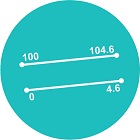
CMAI’s Apparel Index for Q2 July-Sept FY 2016-17 indicates the industry has recorded moderate growth with overall Index Value at 4.64 points compared to previous quarter (April-June FY 2016-17) when the overall Index Value was 5.45 points. However, in the same quarter last year, the Index Value had touched 6.68 points.
Large and Giant Brands, maintained their growth trajectory in Q2, which is still much higher than Small and Mid brands. Interestingly, unlike previous quarters, Large Brands fared better than Giant Brands in Q2. In fact, growth this quarter for Large Brands at 7.16 points is higher than last quarter’s 6.72 points but lower than the same quarter (8.95 points) previous year. The trend is different for Giant, Mid and Small Brands, as they performed much better last quarter compared to this quarter.
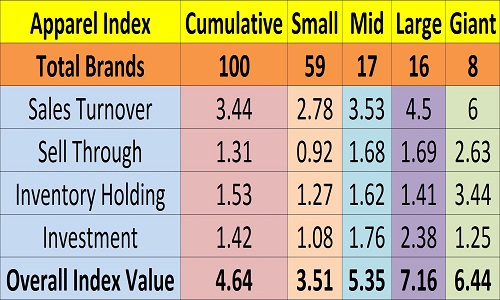
The overall Index value being restricted to 4.64 points, is mainly due to restricted increase in Sales Turnover (3.44 points compared to 3.92 points in the previous quarter), Sell Through (1.31 points over 1.69 points in the previous quarter) and Investments (1.42 points compared to 1.56 points in the previous quarter) relatively. However, Inventory Holding this quarter at 1.53 is better than 1.72 points of previous quarter. It may be noted that the lower value in inventory holding helps in the growth of index value.
Q2 Apparel Index growth slower that last quarter
CMAl's Q2 Apparel Index for the July-Sept (FY 2016-17) clocked in 4.64 points growth. This is approximately 32.19 per cent higher than the index for Small Brands (with turnovers of Rs 10 to 25 crores) which stood at 3.51 points. For Mid Brands (turnover of Rs 25-100 crores), growth is 5.35 points. They have performed much better than Small Brands. However, it’s the Large Brands that have led the growth story this quarter with 7.16 points that has grown the most, even higher than Giant Brands with an index value of 6.44 points. In fact, Large and Giant Brands have consistently being doing well. Notably, index value for Large Brands is 54.31 per cent higher than the Overall Index value.
The Index once again shows Large and Giant Brands are consistently doing better compared to Mid and Small ones. Small Brands have grown the least since positive attributes like Sales Turnover, Sell Through and Investments are dragging down growth and not contributing enough. However, overall Inventory Holding at 1.27 against 1.53 is better this quareter. Both Small and Large Brands have shown lower inventory holding than overall index. The index pattern like earlier quarters continues the trend, as size of the brands goes up from Small to Mid and from Mid to Large, but difference this time is it comes down from Large Brands to Giant Brands. Giant Brands at 6.44, have not performed as good as Large Brands at 7.16. Much higher Inventory Holding in case of Giant Brands at 3.44 against 1.41 for Large Brands, as well as lower growth in Investments in Giant Brands at 1.25 points comparing to 2.38 points for Large, are the two reasons for Giant Brands’ relative lower index value, in spite of having highest growth in Sales Turnover (6.00 points) and in Sell Through (2.63).
Large Brands fare better
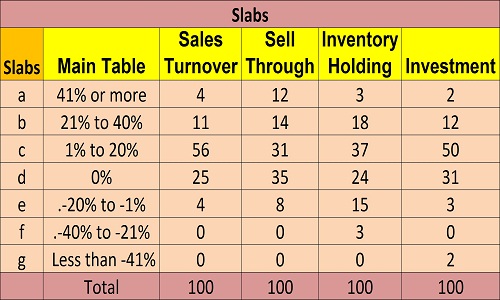
What has worked in favour of Large Brands this quarter, having the highest index of 7.16 points that is 54.31 per cent higher than the Overall Index value, is mainly lower Inventory Holding at 1.41 and the highest Investments at 2.38 across all groups of different size of brands.
Generally, Q2 is known for EOSS period in the month of July, that boosts Sales Turnover but the next two months of August and Sept being pre-festive season months generally sales are not high. Higher Inventory Holding period specially in case of Giant Brands perhaps indicates that Giant Brands have been building inventories just before the festive seasons to achieve peak in sales on the back of buoyancy in spend by consumer during festive, winter and wedding seasons across the country.
Treading the tight rope between Sales Turnover, Inventory Holding
The correlation between Sales Turnover and Inventory Holding explains the difference in index value of different brand groups. A close look at Sales Turnover and Inventory Holding reveals that a cautious and tight control over inventories has an impact on the growth of sales turnover and hence the reason for index value not growing as much.
As the industry moves its learning curve over time, cautious inventories are restricting growth in general. As Rajeev Nair, CEO, Celio points out, “At Celio, we have kept a tight control on inventory over the last two years, we have seen progressive improvement in; End of Season’ inventory. We also work on progressive markdowns on slow movers so that season end inventory is limited. We have also started the practice of pilot stores where we test market new products as all fashion products don’t necessarily behave as we predict. Once successful, we roll across all stores. This increases our sell through rate.”
At the same time, especially indicated by few Giant Brands which have more focus on sales growth to tap opportunities during festive season, have been building higher inventories and infusing more Investments. Anant Daga, CEO, W and Aurelia says they increased investments as they saw an increase in Sales Turnover and improved Sell Through in the quarter, “Our brands W and Aurelia are expanding, products are being received well in the market and we are seeing good sale growth.”
For a winter focus products like thermals that have a narrow period of sales, inventory building is important, as Vinod Kumar Gupta, Managing Director, Dollar Industries, points out, “Some of our products i.e. thermals are seasonal in nature and production has done in the month of July and August. So, taking this into consideration our inventory is higher. But, since these products are seasonal in nature, it will be sold in the winter months. Which will lower our inventory and the closing stock will go down.” For Turtle on the other hand, the emphasis is on Sales Turnover keeping a close check on supply chain, Narendrra Parekh, Marketing Head, Turtle says, “We checked our supply chain management, keeping good fit and quality our major focus on products and refillment (replenishment) and last but not the least focus on marketing activities 360 degrees” have been the reasons for good performance.
Looking ahead to positive Q3
Around 65 per cent brands compared to 61 per cent in previous quarter feel the outlook for next quarter is ‘Good’, surely, a significant jump in outlook expectations. Another 17 per cent (previous quarter 19) brands say their outlook is ‘Excellent’ for the next quarter. Nearly 18 per cent, (same as last quarter), foresee an average outlook and no one feels (previous quarter 2) that it will be ‘Below Average’. Sept-Dec being a quarter for EOSS and the festive season, with Diwali falling in this period, may improve market sentiment, feel many brands, with a strong optimism. CMAl's Apparel Index CMAl's Apparel Index aims to set a benchmark for the entire domestic apparel industry and helps brands in taking informed business decisions. For investors, industry players, stakeholders and policymakers the index is a useful tool offering concrete and credible information, and is an excellent source for assessing the performance of the industry. The Index is analysed on assessing the performance on four parameters: Sales Turnover, Sell Through (percentage of fresh stocks sold), number of days of Inventory Holding and Investments (signifying future confidence) in brand development and brand building.
"The recently held 75th Plenary Meeting of International Cotton Advisory Committee (ICAC) in Islamabad, Pakistan, from October 30 to November 4, 2016 put the spotlight on key issues faced by the cotton fibre. The meeting was attended by 378 persons, including representatives from 14 members, four international organisations and four nonmember countries."

The recently held 75th Plenary Meeting of International Cotton Advisory Committee (ICAC) in Islamabad, Pakistan, from October 30 to November 4, 2016 put the spotlight on key issues faced by the cotton fibre. The meeting was attended by 378 persons, including representatives from 14 members, four international organisations and four nonmember countries.
Cotton demand exceeds production for the second consecutive year. The Secretariat reported that cotton output in 2015-16 fell due to pest attacks, competitive prices from other crops, climate change, etc., resulting in the reduction in world stocks. Although inventories are still higher than usual, the excess has started to be trimmed. Cotton continues to be challenged with an extremely competitive environment.
Polyester posing a threat
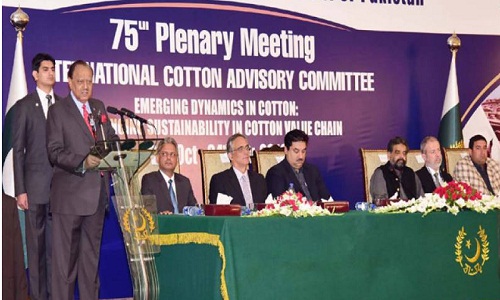
Polyester fibre is causing the biggest trouble for cotton. Presentations made during the session on inter-fiber competition highlighted the increasing share of the world fibre market occupied by polyester. The results showed that polyester had made considerable gains in the market for downstream products, such as yarn, filament, staple and apparel. This trend is witnessed due to cheaper polyester prices caused by current oil prices and underutilised industrial capacity in the polyester industry.
The committee highlighted three challenges faced by the textile industry viz., water, energy and the need for creative new ideas. The cotton industry needs to use less water, by concentrating on reducing energy consumption in cotton gins and transportation, and by creating and applying new ideas, especially for increasing efficiency and reducing costs. One example would be to use High Volume Instrument cotton classing systems throughout the industry to replace the ancient practice of visual classing.
Costs of cotton production
The world average net cost of production (excluding land cost) of cotton lint was $1.16/kg in 2015-16. Reducing the water footprint of cotton and increasing farmers’ income go hand in hand. Growth in demand for water, climate change and increasing population are putting ever more pressure on the use of water in agriculture in general and in cotton cultivation, in particular. Presentations were made by researchers on topics such as application of critical assessments of the performance of irrigation systems; reduction of conveyance losses; implementation of precision agriculture; deficit irrigation; use of irrigation scheduling models; maximisation of yield per unit of water used; innovative methods of irrigation, such as short furrows and laser leveling of furrows; and breeding for high-yielding drought-resistant varieties through conventional breeding and genetic engineering. Practical examples showed that the water footprint of cotton can be significantly reduced, while improving the incomes to the farmers.
Bt cotton changes the textile industry
Cultivation of Bt cotton has changed the pest complex in many countries, so changes in pest control methods are required. Bt cotton benefitted farmers by reducing the need for insecticide sprays and positively impacted yields without raising the cost of fertilisers and agronomic operations. Pink bollworm in some countries has developed resistance to the earlier insect-resistant biotech technologies. They caused huge losses in yield in India and Pakistan during 2015, demanding a reversion to traditional varieties of cotton and traditional methods of insect control in some countries. Although the situation improved in the current season, pests still require vigilance. The dusky cotton bug and the cotton mealybug have also emerged as major pests; the whitefly and leaf curl virus is becoming greater concern. Biotech cotton resistant to the whitefly is at advanced stages of development. When commercialised, these new varieties will bring a big relief to growers. Experts reported similar progress on transgenic cotton resistant to the leaf curl disease.
Focused cotton policies the way ahead
Presentations on public policy for the cotton sector emphasised that cotton faces great threat from Man Made fibers, especially polyester. Cotton producers must innovate, adopt and implement cutting edge technologies that improve productivity at lower costs to stay ahead of the curve. Government policies should focus on allowing prices to fluctuate with market forces, increasing funding for agricultural research, and implementing science based regulations that allow technology development and adoption.
The next plenary session will be held in Uzbekistan during October 2017 on the theme ‘Opportunities and Challenges for Technology Transfer in Cotton’.


